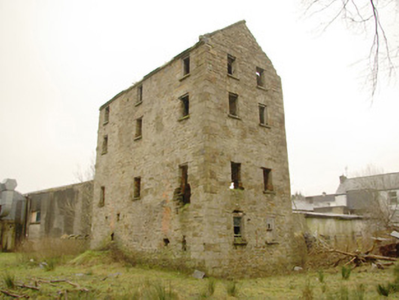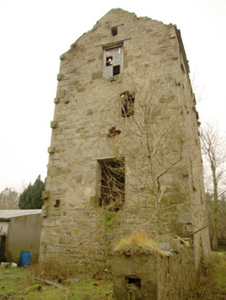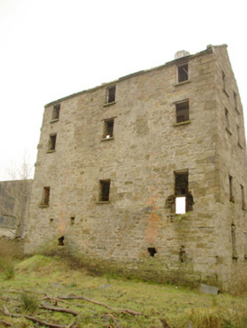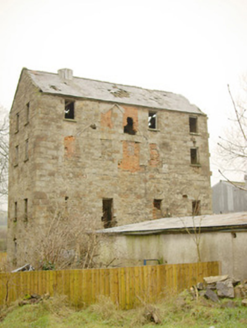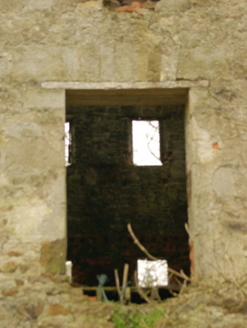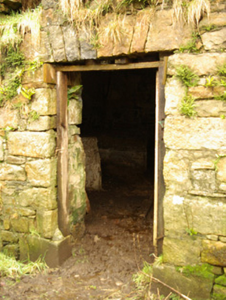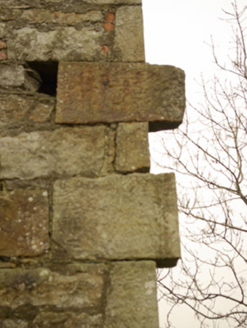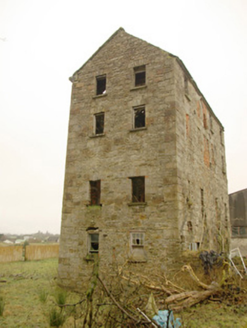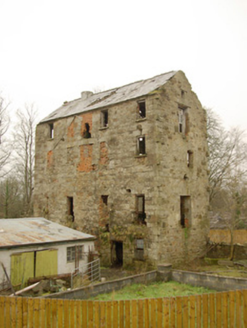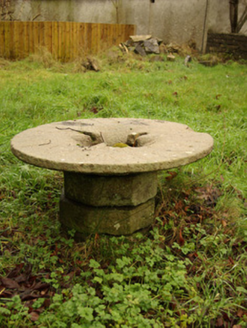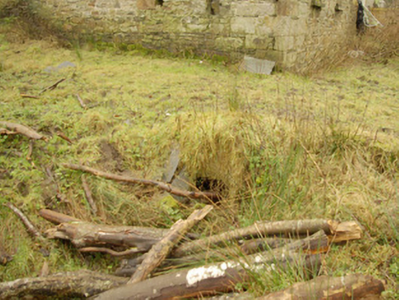Survey Data
Reg No
40843033
Rating
Regional
Categories of Special Interest
Architectural, Historical, Technical
Original Use
Mill (water)
Date
1840 - 1860
Coordinates
193777, 378668
Date Recorded
20/01/2008
Date Updated
--/--/--
Description
Detached four-bay four-storey former corn and flour mill, built c. 1855. Three-bay to north elevation. Now disused and derelict. Pitched natural slate roof with grey clay ware ridge tiles, projecting cut stone eaves course to north and south elevations and cut stone kneeler stone to gable end at eaves level to the north-west corner. Rendered feature to west side of roofline, probably a chimneystack. Randomly coursed random rubble stone walls with flush dressed block-and-start quoins to the corners. Red brick bricked-up openings to south elevation. Square-headed window openings with squared rubble stone voussoirs over timber lintels, and having the remains of timber sliding sash windows (one-over-one, two-over-two, and six-over-six pane) to some openings. Square-headed door opening to the south elevation having cut stone plinth blocks to base, squared rubble stone voussoirs over timber lintels, and remains of timber door. Set back from road in own grounds to the east of Donegal Town centre, a short distance to the east of Donegal Community Hospital. The Drummeeny River (a tributary of the Rover Eske) flows south-north a short distance to the west of site. Remains of former tailrace to the north-west of site having remains of single-arched stone bridge over to the south end. Headrace to the south now infilled/silted. Former sandstone millwheel to the west of site. Single-storey outbuilding to the south having roughcast rendered walls, mono-pitched corrugated metal roof, and squared-headed openings. Main Donegal to Ballybofey road runs to the south of site.
Appraisal
This substantial former flour and corn mill retains its form and industrial character despite being out of use for a considerable period of time. Although now derelict with roof collapsing and floors removed, the building retains it stark and imposing industrial character. It is robustly-built using local rubble stone, and its survival is testament to the quality of its original construction. It acts as an interesting historical reminder of the age of rural water-powered mills, which went into decline during the second half of the nineteenth century with the increasingly popularity of steam power and later the use of fossil fuel powered turbines etc. The scale of this building (and the evidence from maps) suggests that this was a large-scale merchant mill as opposed to a small-scale vernacular mill in local ownership. Griffith’s Valuation (c. 1860) records that this mill was in the ownership of the Earl Of Arran(?) with Anthony McLogue the miller or mill manager. The holding consisted of corn mill, offices and seventeenth acres of land at this time with a rateable value of £64. The remains of the former tailrace to the north-west provides an interesting historical insight into past industrial process. There was also formerly a mill pond to the south with the headrace running to the mill to the north, now no longer extant and built over. This pond was filled using water diverted from the Drummeeny River using a weir and sluices. Although this complex is now derelict and the machinery is now gone, this building represents an important element of the industrial and economic history of the Donegal Town area, and it remains an integral component of the built heritage of the local area. Sensitively converted to a new use, this building would make a strongly positive contribution to the rural countryside to the east of Donegal Town. The simple stone bridge, and the mill wheel complete the setting and add to this composition.

